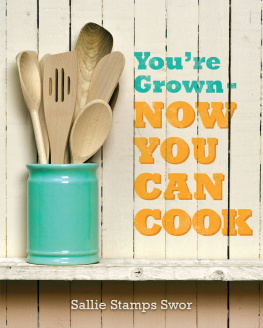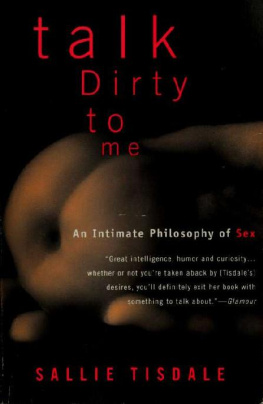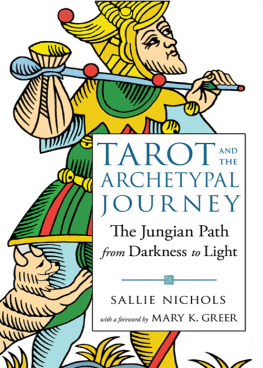2014 by Sallie Bingham
FIRST EDITION
All rights reserved.
No part of this book may be reproduced without written permission of the publisher.
Please direct inquiries to:
Managing Editor
Sarabande Books, Inc.
2234 Dundee Road, Suite 200
Louisville, KY 40205
Library of Congress Cataloging in Publication Data
Bingham, Sallie.
The blue box : three lives in letters / by Sallie Bingham. First edition.
pages cm
Summary: This family history centered around three women from three generations spans the Civil War through the Jazz Age. Fans of Sallie Binghams work will especially appreciate her parents Mary and Barrys romance that unfolds in letters and finally results in marriage. Bingham beautifully demonstrates an inheritance of emotion, morality, ideology, and most lasting of all, irreverence.Provided by publisher.
1. Bingham, SallieFamily. 2. LeFroy, Sallie Montague, 18501942. 3. Caperton, Helena Lefroy, 18781962. 4. Bingham, Mary Caperton, 19045. Mothers and daughtersUnited States. 6. Intergenerational relationsUnited States. 7. Women authors, AmericanBiography. 8. WomenUnited StatesBiography. 9. WomenUnited StatesCorrespondence. 10. American letters. I. Title.
PS3552.I5Z48 2014
818.5403dc23
[B]
2013048733
Cover and interior layout by Kirkby Gann Tittle.
eBook ISBN: 978-1-936747-87-0.
Sarabande Books is a nonprofit literary organization.
The Kentucky Arts Council, the state arts agency, supports Sarabande Books with state tax dollars and federal funding from the National Endowment for the Arts.
All three were tiny women.
Sallie, Helena, and Marymy great-grandmother, my grandmother and my motherbarely topped five feet. In girlhood, they were as proud of their small waists as of their intelligence, which was considerable. Writing was their blessing, and each used it to create a reality more appropriate to her personality, more manageable, and more forgiving of her time.
Autumn Garner, Sallie called her gilded memoir, written for her granddaughters in the 1940s, toward the end of her long life.
Legends of Virginia, Helena named her second collection of short stories, published in 1950, with its light dressing of sarcasm.
Mary forged a romantic legend from the many courtship letters that documented her four-year pursuit of the man who would later become my father.
All three women were tiny, but they held their heads high, though their pride was based in part on an unexamined faith, never directly spoken, in their racial superiority. The accoutrements of gentility defined them, as well as an adherence to a written and spoken language shaped by nineteenth-century English fiction and poetry, classical Greek and Latin texts, and the King James Bible.
Through the devastation of the Civil War, financial disaster, and the early loss of her husband, Sallie turned to pen and paper to record a version of her life that must have been to her, at times, more palatable than the reality itself.
For Helena, the language of Edwardian romance, already outdated, sugared the tales of her struggles in raising six daughters and provided a bulwark against the chaos that her large family and lack of money brought to her door.
Marys educationshe was the first in her family to graduate from collegegave her a larger vocabulary, based on those classical texts and her familys ever-dependable King James Bible, slightly influenced but never overwhelmed by the radical changes of the 1920s.
Long before I knew the details of my foremothers lives, I recognized the theme that ran like a steel thread through their disparate personalities: indomitability, even when the times called for suppleness. To what extent did this steel thread tie up their secrets? How closely linked were their unquestioned feelings of superioritysocial, racial, moral, intellectualto their ability to survive, even flourish, as their fortunes sank and rose?
For years, I could only speculate.
Then, one spring day in 2011, my sister Eleanor was sorting the house after our mothers death and found a large blue box on the top shelf of Marys closet. Its full of things, she told me: folded and refolded letters, a few labeled with a distant relations curatorial notes; an old prayer book; worn college bluebooks; faded manuscripts and deeply creased articlesall earthly remains of Sallie, Helena, and Mary.
Eleanor joked, I was about to put it all in the dumpster along with a lifetime of trash. A regard for the past prevented her; our niece Emily concurred, knowing the value of those things that remain. Jointly, they decided to loan the blue box to me.
As Emily handed it over, I felt excitement fired by an element of dread.
As it does so often, the official record belongs to the men in the family, who in our case made speeches and were quoted in newspaper stories. This blue box contained the womens stories, which always disturb, however unintentionally, the official record.
I studied the box as I held it awkwardly in my armsits hue neither azure nor turquoise, but a soft cornflower blue.
Measuring 20" by 16" by 5", the box was definitely too large for casual storage. It had to hold more than the detritus of scraps, yarn, snapshots, old buttons, and canceled checks that usually ends up in a shoebox in a womans closet.
The box seemed designed for some mysterious purpose, although it had rested undisturbed for decades. For decades, no one who had been aware of it had cared to look inside. Finally, I lifted the lid and peered in.
I saw nests of papers: a marriage certificate listing eighteen slaves by name, the property of my great-great-grandmother; Civil War correspondence between two brothers, one of whom died, nearly starving and half mad as the consequence of a head wound, shortly after the war ended; tightly folded introductions to long-forgotten speakers at a Richmond womens club. These were Sallies.
Next came Helenas manuscripts, the accumulation of her attempts to become a professional writer: humorous personal essays and strange, often disturbing, short stories that sometimes made it to publication.
Finally, I found the record of Marys college career, and the courtship letters that led, after four excruciating years, to her marriage with my father.
Although they were not in the box, I remembered photographs: Sallie, at her debut in white lace and flowers and a delighted smile, and at ninety, proudly bearing the distinction of being the oldest living debutante; Helena, trussed in satin on her wedding day; Mary, prim on a lawn in cardigan, skirt, and lace-collared blouse.
And I thought: tiny, yes, but indomitable.
I took the box home.
Later, as I sifted through its contents, the spidery string holding together the old prayer book frayed, and the dainty red-and-white thread around reticule-sized essays unraveled. The blue covers of college examination books eighty years old separated and hung by a single staple; envelopes, originally torn open in haste, revealed ragged edges; small yellowed pages were covered with clear, well-formed handwriting, the ink still bright; and dropped keys on a 1920s typewriter had marred carefully composed English papers.









